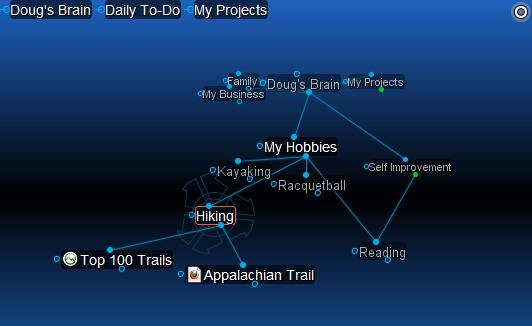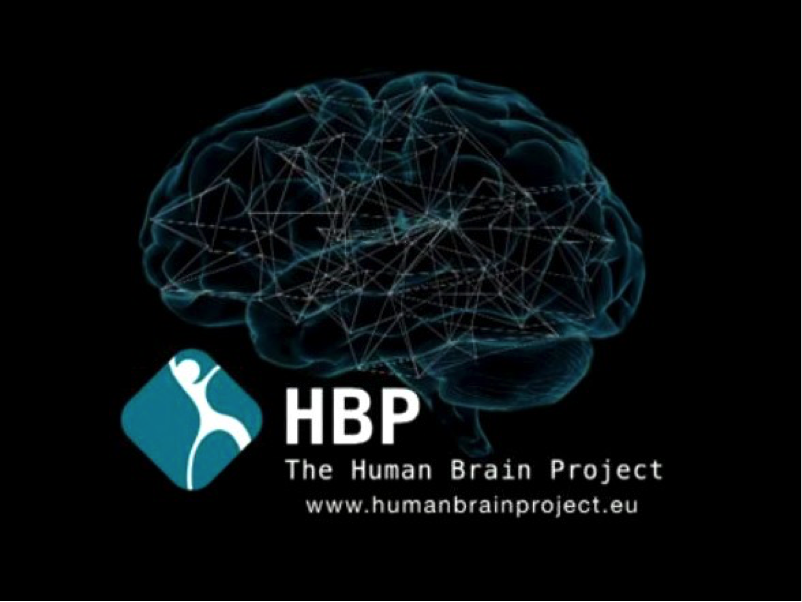The Brain Software
- As a public service by Albany Medical College, software downloads are made available for educational, non-commercial use, free of charge. Currently, we offer the following software: Albany Medical College Virtual Brain Model.
- Braina (Brain Artificial) is an intelligent personal assistant, human language interface, automation and voice recognition software for Windows PC. Braina is a multi-functional AI software that allows you to interact with your computer using voice commands in most of the languages of the world.
Last month, TheBrain Technologies, which has been re-created from the ground up for improved performance and stability. In addition, it features numerous usability enhancements that make it worth a fresh look. For most of its 20-year life, TheBrain was powered by Java, Sun Microsystem’s powerful but sometimes wonky programming language.
Post problems with accessing your Brain in the cloud here. 257 1,188 Web Client Display is Broken in Firefox (#433) by mcaton; TeamBrain. General discussion of TeamBrain. TheBrain Mind Map & Mindmapping Software Download TheBrain Mind Mapping Software.
The Brain Software Tags And Type Mean

The engine behind TheBrain 9 is a new, proprietary brew of state-of-the-art software technologies, which make the new program significantly faster and more reliable than its predecessors. For the first time, TheBrain is a true native application on Windows, MacOS, iOS and Android, optimized for the OS-specific features of each platform. Here’s what’s new, improved and notable in TheBrain 9 Pro: New tabs speed access to multiple brains: The biggest and most visible user interface upgrade is a new tab interface at the top of the program’s workspace, which enables you to quickly move from one brain to another.
You can even use it to drag nodes from one brain to another, or view different parts of the same brain simultaneously in two different tabs. New import option: In TheBrain 9, you can now import visual maps from a variety of formats, including MindManager and Freemind. This enables knowledge workers with collections of mind maps to easily import them with a minimum of hassle. I tried it with a MindManager mind map that summarizes the top 10 TED Talks. It loaded in normal view for TheBrain (sort of an org-chart like appearance, with the central topic on top and the 10 first-level topics branching out beneath it in two groups of five). I was easily able to use the View button on the program’s sparse toolbar to switch to mind map view; plus and minus icons on either side of this button enable you to open and close all branches – one layer per click – nice and intuitive!
Mind map view: One of the recent trends in business use of software is that more knowledge workers are utilizing large, high-resolution monitors. Accordingly, the developer has redesigned the program’s expanded view to provide a cleaner layout on large screens. In the past, switching to expanded view yielded a visual map where some topics overlapped each other. In version 9, this is no longer the case. Expanded view now looks very much like a mind map, which should make it appeal to current users of mind mapping software.
New pin customization options: In previous versions of TheBrain, pins only had on and off states. In the new version, you can add multiple categories to pins without increasing visual clutter. You can also access more detailed settings for pins that control whether icons are turned on or off, or appear when hovering over the pin. Another set of controls gives you similar options over tag text. In addition, you can customize icons to give you a greater level of control over their visual context. In other words, you can set up an icon scheme that is most meaningful and relevant to you. Enhanced note formatting: The notes pane of TheBrain 9 has been upgraded to support numerous types of rich formatting.
You can also embed images, videos, links and more in the integrated notes window. It now appears to the right of the workspace, and performs double duty as a browser/viewer for web pages and other linked or attached files. Clicking the plus (+) icon to open a new tab opens a dialog box that lets you do numerous things:. Open a web page URL.
Link to a file. Open folder. Create image.
Capture image. Add event (Events can now be synced both to and from Google Calendar as part of TheBrain 9’s sync services).
This same tabbed toolbar at the top of the viewer pane contains a “Notes” tab as well. So no matter what you’re working on, you can add information and context to a node in your brain. Nicely integrated. Embedded web browser: Web attachments appear right inside TheBrain 9, letting you access web information without even having to open it in a separate browser. I’ve said it before with several mind mapping programs that have implemented this functionality – it’s actually more valuable than it appears to be at first glance. There’s something to be said for staying focused on one software application, instead of bouncing around from one to another. When you’re trying to maintain mental focus, this is critically important.
Conclusion TheBrain 9 represents the biggest leap forward in performance and usability in quite a few years. If you work with large bodies of knowledge and information that has many deep connections, you’ll want to take a look at this latest iteration of TheBrain. My favorite updates and new features include the mind map import, clean interface with a minimum of distracting buttons and tabs and the multi-functional notes/browser/file viewer pane. Upgrades to TheBrain 9 are free if you have an active services plan or if you purchased a new license of TheBrain after November 1, 2015. When you login using TheBrain 9, your existing license will be automatically recognized.

If you haven’t previously used TheBrain, a one-time license for version 9 is US$219. Perpetual and monthly license arrangements are also available, and are described in detail on. A 30-day trial version of TheBrain 9 Pro is available for download for Windows and Mac. After 30 days, it reverts to a free version with limited functionality.
The HISTORY BLUEPRINT: Richard’s Brain Model “A Comprehensive Ontology of Cognitive Liberty” (2009-Present) A still-frame of the interactive HISTORY BLUEPRINT, which shares the research and artifacts organized by Richard Grove. Description The HISTORY BLUEPRINT is a tool for auto-didactic learning, allowing you to begin developing a comprehensive understanding of where we are, where we’ve been, and where we’re going as Humanity.
By learning to observe, ask questions, and model your findings, you can either start from scratch or work from what’s already been mapped out. The “map is not the territory”, so the HISTORY BLUEPRINT is an overview perspective, thus reflecting that which exists. Each entry represents the historical lineage and evolution of the subject/topic (called “thoughts” within the personal brain software) and the inter-connectivity to other topics relevant to the subject matter. It’s not “the story of history”, rather, it’s a map so that you can explore on your own, follow your own interests, and determine your own course in life by making more informed decisions than you could ever make without using As featured in the T&H Production “History So It Doesn’t Repeat” (series), and the T&H series “The Deep End: Dive Into Consciousness”, this is the model Richard build through which he gained his understanding of the validity and inter-connectivity of both correlation and causation, as well as informal connections regarding the various subjects in history. With than 10,000 individual entries, inter-connected with more than 50,000 linkages, the HISTORY BLUEPRINT was built thought by thought over 10 years during an ongoing study of Cognitive Liberty – saving you time, energy, and money on the road to learning about freedom and liberty, expediting your goal of prosperity and wisdom.
Because the HISTORY BLUEPRINT is non-linear, and non-finite, you can leverage what’s been mapped and start adding your own discoveries, research, evidence, and artifacts which empower your ability to understand, make clear decisions, and avoid repeating history. It’s still actively being developed today, and updates to the HISTORY BLUEPRINT are free and published every few months. Get Richard’s HISTORY BLUEPRINT: “A Comprehensive Ontology of Cognitive Liberty” via digital download (.brainzip file), which you can open in the free version of the Personal Brain Software (link included with purchase). Useful Links: T&H Model on Public Display (Web Only): HISTORY BLUEPRINT aka “” (2008-Present) by Richard Grove, Tragedy and Hope dot com To Use: Simply click into the model, either using the “pins” at the top, marking different topics of entry, or by starting to click into the cybernetics entry point; all of history is connected, and the brain model connects the dots, in a meaningful way.
You can also click the avatar on any node, and see the attachments and URLs providing reference and context, so you learn as you go. Model Summary: With over 10,000 interconnected points of interest, and almost 50,000 links to study, and research, this model contains a potential for understanding which public schooling cannot afford to provide. Entry Points into the Brain model: (use top menu drop-downs) Join: the “” in the Tragedy and Hope online community (just 1 of the more than 50+ useful groups therein).!
Comments are closed.
